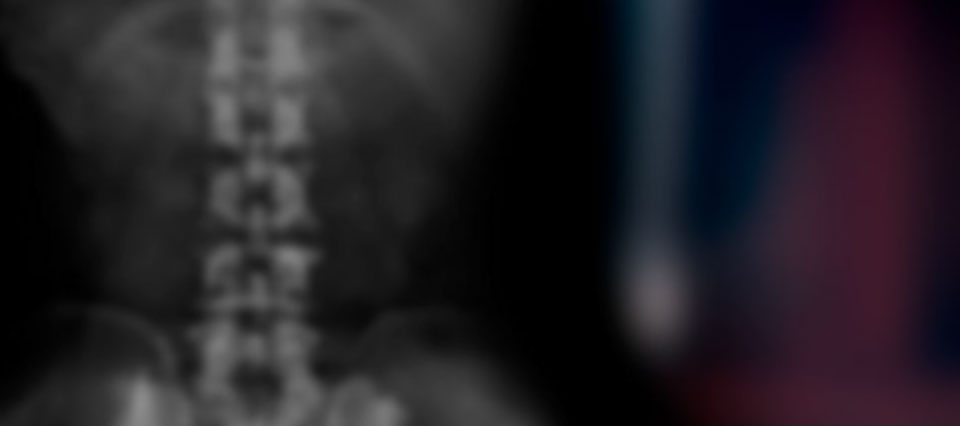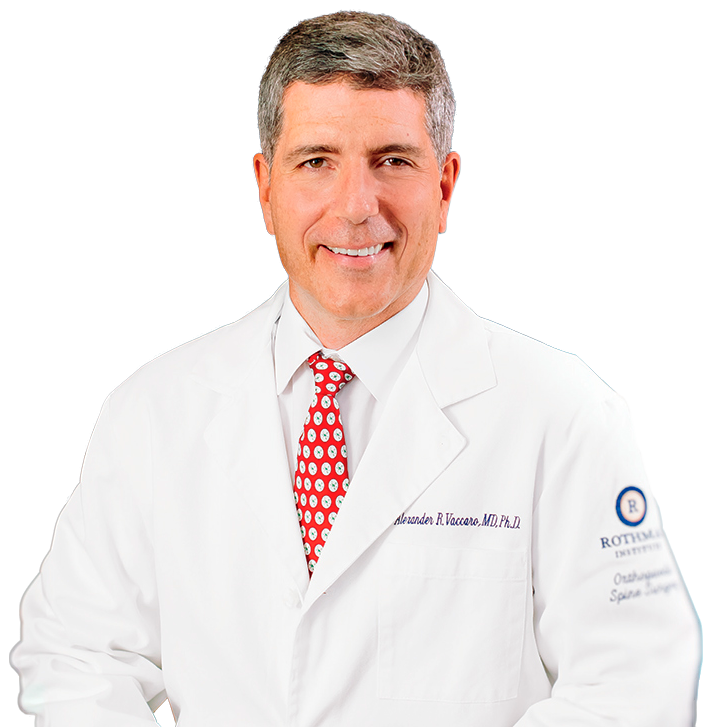feature stories
A class act—Interview with Alexander Vaccaro
Meet the AOSpine Chairperson-elect Shanmuganathan Rajasekaran
Highlights
Davos Courses 2017
Social media—friend or foe? How to manage your online reputation
A new virtual library for AOSpine Members (Spanish/Portuguese)
Educating globally—a quick guide for cross-cultural communication
Crossing borders—International Educator of the Year 2016 Juan Emmerich
Success story: regional courses in Mexico
INSIGHTS Spine is Growing Fast
AOSpine members opinion matter!


Alexander Vaccaro explains the development of the AOSpine Classification Systems, shares some tips on OR productivity, and why he decided to get an MBA.
What is the background of the development of the AOSpine Classification Systems and how did you get involved in the project?
For many years AO had the most popular classification system in the world for thoracolumbar fractures: the Magerl system, while the Americans favored their own, descriptive classification, called the Denis classification. I always used the Denis system but I became interested in the AO classification because it is very logical in the way it uses the alphabet to place fractures in silos: A compression, B distraction C translation injuries.
In the early 2000s, a group of famous surgeons from around the world synthesized the world's literature and came up with the TLICS system.
Although both Magerl and TLICS are well-known schemes to describe thoracolumbar fractures, no injury classification system has really achieved universal adoption.
The AO then decided to look at it again and to develop a more widely accepted, comprehensive yet simple classification system.
I was invited to the group by my former mentor, Dr. Cumhur Öner (current Chairperson of the AOSpine Knowledge Forum Trauma Steering Committee). We all put our minds together and came up with the present-day AOSpine Classification System.
We started with the thoracolumbar classification in 2013, then we adapted the new system also to the cervical spine and took it even further into a sacral pelvic fracture classification. We are currently working on the classification for the upper cervical spine.
What is the difference between the AOSpine Classification System and the Magerl/TLICS method?
The system takes the principles of the AO ABC system and allows for simple grouping into various morphologic categories for ease of description. We can "The AOSpine Thoracolumbar Classification System combines the best of the Magerl ABC method and the TLICS method, which is phenomenal. This is now potentially the most user-friendly and reliable classification system around the world."now utilize this for registry creation. The classification system for the thoracolumbar spine has reduced the subdivisions of the Magerl system from 53 down to only 5 As, 3 Bs and 1 C. The new classification also has a special focus on the patient's neurology along with modifiers.
What was the most difficult classification system to come up with so far, and which one was the easiest?
The upper cervical spine classification is proving the most challenging because every part is so different and it's hard to find a logical use of A, B, and C. The Atlas or C1 is so different than the C2 body or the interbody spaces and the ligaments are so different compared to other parts of the spine.
The easiest system to develop was the thoracolumbar classification, followed by the sacral classification and then cervical classification.
How does an international AOSpine Knowledge Forum collaboration of this scale work in practice? Is it easy to find consensus?
If you want to get a task like this done, you have to spend a few hours on it every week, then you have to get away from it and give it to someone else to kick around and get their feedback. Currently, we have someone on our team assigned to the classification full time. We discuss everything with the Knowledge Forum Committee, we argue, agree, disagree, argue some more… It's a bit like trying to get something past Congress.
There are people of different nationalities and cultural backgrounds working in the Knowledge Forum group. How does this reflect in the work of the Knowledge Forum and what were your biggest learnings?
"My biggest lesson learned is that you have to check your ego at the door. You're not right, you're not wrong, it doesn't matter how many papers you've published, you have to get people to see your vision and then get consensus and buy in by everyone."It's great to have different perspectives, but it's also challenging. Evidence-based medicine is predicated on the values and cultures of the population, so what's desired for someone in one country may not be acceptable somewhere else. For example, certain cultures are more aggressive in the sense that they feel surgery in certain fractures is optimum, while another culture may be more wary of the risk of surgical complications and favor a nonoperative approach. It can be hard to get everyone on the same page and it takes a lot of discussion and debate to get to the final solution.
What achievement in your career are you most proud of?
I recently received the position of Cavalier or the order of the Italian star from the Italian Government, which is given to someone who has worked to promote international co-operation between Italy and their country.
I'm proud of that achievement but what I'm most excited about is the opportunity to develop classifications in spine with some of the brightest medical minds. It's great to see external research papers which show that our work is validated and applicable.
You once said in an interview that the most difficult achievement in your career so far was your MBA, why is that?
As the president of the Rothman Institute, I have to ensure that our business model makes sense from a financial perspective. We're quite big now with a geographic territory ranging from New York, North and South Jersey to "Looking back, when you're a student taking organic chemistry, advanced physics, and calculus and staying up all night studying you mistakenly believe the humanities and business students have it easy. I thought this until I got my MBA."Southeastern Pennsylvania. In August, the U.S. News and World report ranked us 4th in the nation for Orthopaedic care. I enrolled in the MBA because I wanted to understand the business of medicine, and how business people think, so the Rothman Institute could help deliver valued care to a greater population of patients.
You have a very distinguished career as a surgeon, and you've served as the president of the Rothman Institute and the Chairman of Orthopaedics at Thomas Jefferson University since 2014. How does your typical work day look?
"Before I became President, I wasn't finished in operating theatre until between 4-6pm, but through a team based approach studying productivity and efficiency in the OR, we discovered that if you cut skin at 6 am instead of 8 am the surgery is often quicker and more efficient with the same degree of safety."I usually get up at 4.30am and after exercising have my first conference call at 5.30am. I do 4-5 hours office work a day, and I operate three days a week, usually 5-6 spine cases per day. I start my ORs at 6 am, and do a staggered room, so when I finish one surgery the next is ready go, without a break.
That's because everyone is focused and there are no interruptions. I usually finish my meetings around 8:30 pm at night after coming home for dinner with the family from 6-7pm. I take the weekends off, except for writing papers, but I can do that early in the morning before my kids wake up. I then have the weekend to dedicate to my family.
Biography
Alexander R. Vaccaro, M.D., Ph.D., M.B.A., President of the Rothman Institute
He is the Project Leader of the AOSpine Classification System, and past Chairperson of the AOSpine Knowledge Forum Trauma Steering Committee.
Alexander Vaccaro graduated Summa Cum Laude from Boston College in 1983 with a B.S. in Biology. He received his medical degree from Georgetown University School of Medicine where he was promoted with "Distinction." He earned membership in the Alpha Omega Alpha (AOA) Honor Society and graduated with honors in 1987.
He completed a year of Surgical Internship at Cedars-Sinai Medical Center in Los Angeles, CA and completed his Orthopaedic Surgery Residency at Thomas Jefferson University where he graduated in 1992. Alexander Vaccaro completed a Spine Fellowship at the University of San Diego, CA. In 2007, he earned a Ph.D. in the field of Spinal Trauma.
In 2015, he received his MBA (Master of Business Administration) from Temple University's Fox School of Business in Philadelphia, PA and graduated with honors.
Alexander Vaccaro has served as the president of the Rothman Institute since 2014, and is the Richard H. Rothman Professor and Chairman in the Department of Orthopaedic Surgery, and Professor of Neurosurgery at Thomas Jefferson University in Philadelphia, Pennsylvania. He was the recipient of the Leon Wiltse award given for excellence in leadership and clinical research for spine care by the North American Spine Society (NASS) and is the past President of the American Spinal Injury Association and the Association for Collaborative Spine Research.
He has over 650 peer reviewed and 195 non-peer reviewed publications. He has published over 300 book chapters and is the editor of over 54 textbooks and co-editor of OKU-Spine I and editor of OKU-8. Alexander Vaccaro also serves as Co-Director of the Regional Spinal Cord Injury Center of the Delaware Valley and Co-Director of Spine Surgery and the Spine Fellowship program at Thomas Jefferson University Hospital, where he instructs current fellows and residents in the diagnosis and treatment of various spinal problems and disorders.
In 2015, the SmartCEO magazine honored Alexander Vaccaro as their Philadelphia CEO of the Year.
The AOSpine Classification SystemThe AOSpine Knowledge Forum Trauma, under the lead of Alexander Vaccaro, was given the task to develop and validate a new classification system. The AOSpine Thoracolumbar and Subaxial Classification systems are the result of a systematic assessment and revision of the Magerl classification. The AOSpine Classification Group reached a consensus on a classification that incorporates both fracture morphology and clinical factors relevant for clinical decision making. After the endorsement of the classification by the International Board, the Knowledge Forum Trauma finalized the validation studies. Links to:Classification Videos:www.aospine.org/classification Validation studies: Thoracolumbar Classification:AOSpine thoracolumbar spine injury classification system: fracture description, neurological status, and key modifiersVaccaro AR, Oner C, Kepler CK, Dvorak M, Schnake K,Bellabarba C, Reinhold M, Aarabi B, Kandziora F, Chapman J, Shanmuganathan R, Fehlings M, Vialle L;AOSpine Spinal Cord Injury & Trauma Knowledge Forum.Spine (Phila Pa 1976). 1;38(23):2028-37, Nov 2013. Reliability analysis of the AOSpine thoracolumbar spine injury classification system by a worldwide group of naïve spinal surgeonsKepler CK, Vaccaro AR, Koerner JD, Dvorak MF, Kandziora F, Rajasekaran S, Aarabi B, Vialle LR, Fehlings MG,Schroeder GD, Reinhold M, Schnake KJ, Bellabarba C, Cumhur Öner F.Eur Spine J 25(4): 1082-1086, 2016. Subaxial Classification:AOSpine subaxial cervical spine injury classification systemVaccaro AR, Koerner JD, Radcliff KE, Oner FC, Reinhold M, Schnake KJ, Kandziora F, Fehlings MG, Dvorak MF, Aarabi B, Rajasekaran S, Schroeder GD, Kepler CK, Vialle LR.Eur Spine J 25(7): 2173-2184, 2016.
A class act
Newsletter 13 October 2017
Feature stories
A class act—Interview with Alexander Vaccaro
Meet the AOSpine Chairperson-elect Shanmuganathan Rajasekaran
Highlights
Davos Courses 2017
Social media—friend or foe? How to manage your online reputation
A new virtual library for AOSpine Members (Spanish/Portuguese)
Educating globally—a quick guide for cross-cultural communication
Crossing borders—International Educator of the Year 2016 Juan Emmerich
Success story: regional courses in Mexico
INSIGHTS Spine is Growing Fast
AOSpine members opinion matter!